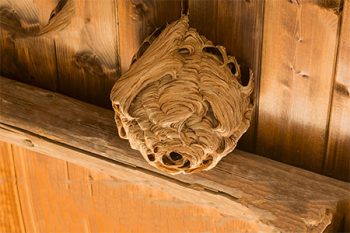Roles of Bees


How Do Bees Get In Your Home?
Most bees are beneficial, and most of the time, they can be removed and relocated. That is always the first best choice. Bees can be relocated when they are more easily accessible such as clumped up in a ball in a tree or going into an H block void on a block fence. Occasionally the bees cannot be removed due to variable factors.
Bees can become entrenched inside a wall void, other structural components, utility box, or other difficult to access area. The queen will find a small opening to gain access to the inaccessible area. The drones will follow her in and begin to pack the void area with honeycombs. When bees are entrenched in this fashion, they cannot be removed. The queen would have to be smoked out, and that is not going to happen through ½ inch in an inaccessible area.
If the inaccessible area is ripped open to try and get to the queen, it will destroy the hive in the process.
Bee Removal


Alternatively, if you do decide to have the honeycombs extracted, Anteater Exterminating always recommends a licensed building contractor. They can open the wall, avoid electrical and plumbing lines, and repair it to its original state. They can do this once the bees are for sure inactive.
What kinds of Bees are there?
Large black bees are usually carpenter bees. They will burrow into unfinished or exposed wood. Carpenter bees do not eat the wood; rather, they just nest in it. They are easily treated, then the holes they created are patched. If the exposed wood is painted over and treated correctly, the carpenter bees will not infest it agarin. Wood piles and other wood can be store away from the home to mitigate the carpenter bees.
Identification: First, identify the species of bees you are dealing with. This helps determine the appropriate removal method.
Professional Removal: Contact a licensed pest control service experienced in bee removal. They will inspect the situation, locate the hive, and recommend the best course of action.
Removal Techniques:
-For honey bees and other beneficial species: Removal involves relocating the hive intact, if possible, by beekeepers who specialize in hive relocation.
-For aggressive or problematic species (e.g., Africanized honey bees): Professional extermination may be necessary due to safety concerns.
Preventative Measures: After removal, take steps to prevent future bee infestations, such as sealing entry points, removing attractive nesting sites, and maintaining a clean environment.
Regular Inspections: Schedule regular inspections to catch potential bee colonies early before they become established.
By following these steps and relying on professional expertise, you can effectively address bee problems and reduce the risk of recurrence.
